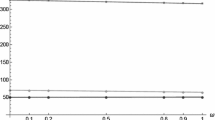Abstract
The four Nordic countries Sweden, Denmark, Finland and Norway have fully integrated electricity grids, implying that electricity trade hitherto has accounted for a crucial part of each country’s power balance. Electricity trade also provides cost-efficient opportunities for the Nordic countries to either jointly or separately fulfil their CO2 obligations. Assuming the targets that were agreed upon in (the aftermath of) the Kyoto negotiations in 1997, and establishing scenarios where CO2-emission-permits trade among the Nordic countries is allowed, it is shown that the value of emission trading is somewhat larger than the corresponding value of electricity trade. Furthermore, if both electricity and emission permits can be traded on a common Nordic market this can lead to amplified economic benefits yielding a gain that exceeds the sum of the separate values of electricity and emission permits trade. It is also shown that the additional costs of fulfilling the Kyoto protocol are small compared to the total costs of the Nordic energy system.
Similar content being viewed by others
References
FCCC, Report of the conference of the parties on its third session, held at Kyoto from 1 to 11 December 1997, FCCC/CP/1997/7/Add. 1.
Bahn et al., Advanced mathematical programming modeling to assess the benefits from international CO2 abatement cooperation, Environmental Modeling and Assessment 3 (1998) 107.
Larsson, Grohnheit and Unander, Common action and electricity trade in Northern Europe, International Transactions in Operational Research 5(1) (1998).
NORDEL,Årsberättelse 1997 (in Nordic languages).
Dansk Elforsyning Statistik 1996, Danske Elvaerkers Forening (in Danish).
Energy Statistics 1996, Statistics Finland.
W. Marcuse et al., A dynamic time dependant model for the analysis of alternate energy policies, in: Operational Research '75, ed. K.B. Haley (North Holland, Amsterdam, 1976) pp. 647–667.
Fishbone and Abilock, MARKAL - A linear programming model for energy system analysis - technical description of the BNL version, Energy Research, Vol. 5 (1981).
P. Andersen and P. Fuglsang, Vurdering av udviklingsforløb for vindkraftteknologien, RISØ-R-829(DA) (Forskningscenter RISØ, Roskilde, 1996) (in Danish).
IPCC, 2nd National Communications for Norway, Sweden, Denmark and Finland.
W.D. Nordhaus, The Swedish Dilemma - Nuclear energy vs. the Environment, SNS No 74 Occasional Paper (Nov-95).
Author information
Authors and Affiliations
Rights and permissions
About this article
Cite this article
Unger, T., Alm, L. Electricity and emission-permits trade as a means of curbing CO2 emissions in the Nordic countries. Integrated Assessment 1, 229–240 (2000). https://doi.org/10.1023/A:1019135900303
Issue Date:
DOI: https://doi.org/10.1023/A:1019135900303




